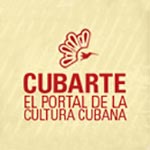Periodista y documentalista chilena. A lo largo de su trabajo audiovisual ha abordado importantes temáticas de la identidad y la memoria política de su país, rescatando personajes e historias que no han tenido cabida en los medios de prensa tradicionales.
Nació en el año 1967. Se tituló de Periodista en la Pontificia Universidad Católica de Chile y luego trabajó en diversos medios de comunicación nacionales, tanto en prensa escrita como en televisión: Diario La Época, Canal 13 y en el desaparecido Canal Rock & Pop.
Realizando una investigación periodística acerca del músico chileno Víctor Jara, asesinado durante la dictadura miliar, se entusiasma con el tema y decide hacer un documental en homenaje al artista, que se titula El derecho de vivir en paz. Es así como comienza a incursionar en el cine documental, dominio en el que ha cosechado importantes éxitos.
Sus documentales El derecho de vivir en paz (1999) y Estadio Nacional (2001) han sido exhibidos y premiados en diversos festivales internacionales de cine.
Ha realizado, además, un documental sobre Salvador Allende, para la
Fundación Allende y un reportaje televisivo acerca del grupo musical
chileno Los Jaivas, para la Televisión Nacional de Chile. Su
trabajo audiovisual abarca también la realización de videoclips y la
edición de conciertos en vivo para bandas como Los Prisioneros e
Inti Illimani.
La documentalista realiza un importante trabajo de recopilación de archivos (conciertos, entrevistas, videoclips) de Víctor Jara, los que intercala con entrevistas a sus familiares y amigos, creando así una completa biografía audiovisual del folklorista. Es muy interesante el trabajo de la banda sonora del documental, puesto que se incorporan las principales canciones de Jara, las que incluso adquieren un carácter premonitorio, como es el caso de la canción El derecho de vivir en paz, que es la que le dará el nombre a este documental.
Estadio Nacional, cuenta la historia de los miles de presos políticos que estuvieron detenidos en el Estadio Nacional de Chile, el cual fue utilizado como centro de prisión y tortura desde el 11 de septiembre de 1973, hasta el 7 de noviembre del mismo año. Durante casi dos meses, el principal recinto deportivo del país fue testigo de innumerables violaciones a los derechos humanos.
Carmen Luz Parot recupera -a través de este documental- un fragmento importante de la memoria política del país, confrontándose y confrontando al público, con un tema pocas veces hablado, pocas veces tratado en los medios de comunicación nacionales.
Treinta años después de los hechos, la documentalista nos entrega una cronología exacta y completa de lo que allí ocurrió, basándose en los impactantes testimonios de quienes estuvieron detenidos en este lugar. Parot hace recorrer a los entrevistados los diferentes recovecos del estadio (galerías, camerinos, pasillos), con el objetivo de precisar y graficar qué ocurría en cada uno de estos sitios durante la detención, reconstruyendo sobre la base de testimonios y anéctodas los ambientes de cada lugar.
Filmografía
1999 El derecho de vivir en paz
2001 Estadio Nacional
Carmen Luz Parot (1967) born in Chile, is a journalist and documentary maker. Throughout her audiovisual work, she has dealt with important subject matters related to her country identity and political memory; in this way rescuing characters and stories that have been absent of the traditional press media. She graduate as journalist in the Pontifical Catholic University of Chile (Pontificia Universidad Católica de Chile) and later worked in different national media, both in the press and in television: Diario La Época, Canal 13 and in the former Canal Rock & Pop.
While she made a journalist research on the Chilean musician Víctor Jara, murder during the military dictatorship, she felt a great enthusiasm with this subject and decided to make a documentary as a tribute to the artist, which was title El derecho de vivir en paz; then, she began to make documentary films with a great success.
Her documentaries El derecho de vivir en paz (1999) and Estadio Nacional (2001) –about the use of this sport installation during the time of the dictatorship as center of torture and detention- has been screened and awarded in different international film festivals.
She also made a documentary about Salvador Allende for the Allende Foundation (Fundación Allende) and a television report on the Chilean musical group Los Jaivas for the Chile National Television. His audiovisual work includes also the creation of music videos and the edition of live concerts for groups as Los Prisioneros and Inti Illimani.
El derecho de vivir en paz is a documentary of 100 minutes that encompasses the whole life of the Chilean musician and folklorist Víctor Jara, who was arrested and murder in September 1973 by the military regime of Augusto Pinochet in the former Chile National Stadium, named today Victor Jara. The documentary filmmaker made an important work of compilation of archive material (concerts, interviews, musical video) about Víctor Jara, which she alternates with interviews to his family and friends, creating in this way a complete audiovisual biography of the folklorist. It is very interesting the work with the soundtrack, since the main songs of Jara, which were invested of a premonitory character, as in the case of the song El derecho de vivir en paz, that gave title to this documentary.
Estadio Nacional, tells the story of the thousand of political prisoners that were arrested at The Chile National Stadium (Estadio Nacional de Chile), which was used as imprisonment and torture center from September 11, 1973 to November 7 of the same year. For almost two months, the main sport installation of the country was witnessed innumerable Human Rights violations.
Carmen Luz Parot recovered with this documentary- an important fragment of the political memory of the country, facing herself and the audience with a subject rarely dealt with or referred to at the national media.
Thirty years after these events, the documentary filmmaker filmed an exact and complete chronology of what happened there, using the dramatic testimony of those who were arrested in this place. Parrot made that interviewees visited all the corners of the stadium (galleries, locker rooms, halls), with the aim to show and visualize what happened at each of these places during and before the detention; the film reconstructed through testimonies and anecdotes the environment of each place.
The victims make spectators to face this obscure period of the Chilean history, at the time that they face their own terrible past. This is a documentary that moves and is useful as a crucial testimony of an episode that many times the official history has preferred to keep in silent.
Filmography
1999 El derecho de vivir en paz.
2001 Estadio Nacional.
 “Nuestro objetivo final es nada menos que lograr la integración del cine latinoamericano.
Así de simple, y así de desmesurado”.
“Nuestro objetivo final es nada menos que lograr la integración del cine latinoamericano.
Así de simple, y así de desmesurado”.













